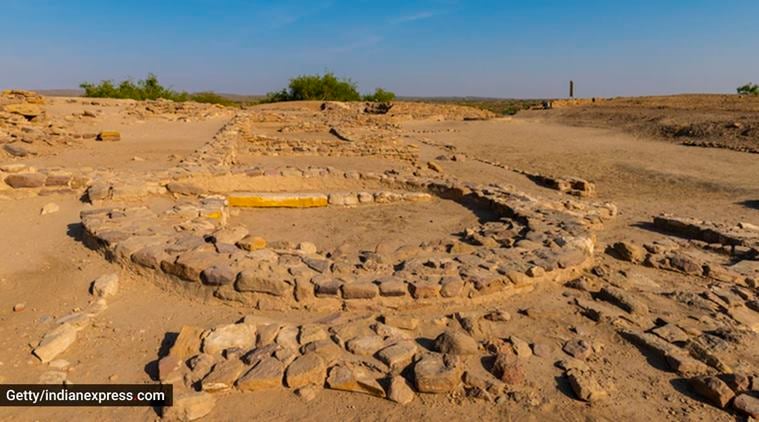 Dholavira is known locally as Kotada (large fort). Are you thinking of visiting it?
Dholavira is known locally as Kotada (large fort). Are you thinking of visiting it? After Telangana’s Ramappa Temple, now Dholavira, a Harappan-era city in Gujarat has secured a place in the UNESCO World Heritage List. The decisions were taken during the 44th session of the UNESCO World Heritage Committee in Fuzhou, China. While Kakatiya Rudreshwara (Ramappa) Temple received its inscription as a World Heritage Site on July 25, Dholavira was inscribed on the World Heritage List today, bringing India’s number of World Heritage sites to 40.
🔴 BREAKING!
Dholavira: A Harappan City, in #India🇮🇳, just inscribed on the @UNESCO #WorldHeritage List. Congratulations! 👏
— UNESCO 🏛️ #Education #Sciences #Culture 🇺🇳😷 (@UNESCO) July 27, 2021
Taking to Twitter, Indian Prime Minister Narendra Modi expressed happiness, sharing several pictures from when he had personally visited Dholavira.
Absolutely delighted by this news.
Dholavira was an important urban centre and is one of our most important linkages with our past. It is a must visit, especially for those interested in history, culture and archaeology. https://t.co/XkLK6NlmXx pic.twitter.com/4Jo6a3YVro
— Narendra Modi (@narendramodi) July 27, 2021
I first visited Dholavira during my student days and was mesmerised by the place.
As CM of Gujarat, I had the opportunity to work on aspects relating to heritage conservation and restoration in Dholavira. Our team also worked to create tourism-friendly infrastructure there. pic.twitter.com/UBUt0J9RB2
— Narendra Modi (@narendramodi) July 27, 2021
It is no secret that Indians love to travel, and now with these two historical places being recognised as World Heritage sites, it serves as a bigger impetus to simply pack your bags and go out exploring.
If you are looking to explore Dholavira anytime soon, here is a quick guide for you.
About the place
A UNESCO press release describes the place perfectly — an “ancient city”, which is “one of the most remarkable and well-preserved urban settlements in South Asia dating from the 3rd to mid-2nd millennium BCE (Before Common Era)”.
This Harappan city was discovered in 1968. It is made unique by some of its characteristics, which include a water management system, multi-layered defensive mechanisms, extensive use of stone in construction and special burial structures.
Within the city, there are also artefacts of various kinds such as copper, shell, stone, jewellery of semi-precious stones, terracotta, gold, ivory, etc. Which means that if you are an art and culture, and history enthusiast, this place will be of interest to you.
 Ruins of Harappan city Dholavira in Great Rann of Kutch, Gujarat. (Photo: Getty/Thinkstock)
Ruins of Harappan city Dholavira in Great Rann of Kutch, Gujarat. (Photo: Getty/Thinkstock)
History
According to the Gujarat Tourism website, “Dholavira, known locally as Kotada (large fort), sprawls over 100 hectares of semi-arid land at the north-west corner of the island of Khadir, one of the islands in the Great Rann of Kutch that remain above the flood-plains in months when the rest of the desert is submerged by the monsoon”.
It is believed that after the peak of civilization, Dholavira was “temporarily abandoned”, after which its settlers “returned with a de-urbanized culture”. There are hints they “willingly chose to simplify their lives”, instead of trying to ride the collapse of their once glorified civilization. You may be able to ruminate on what transpired in the past, what life meant back then and if anything is truly permanent.
View this post on Instagram
How to reach
The website states that if you wish to reach here by road, then start from Ahmedabad, which is 335 km from Bhuj, with a driving time of 7 hours.
Dholavira is an additional 250 km from Bhuj. A bus leaves from Bhuj at 14.00 hours and arrives at Dholavira at 20.30 hours. It leaves at 5 am the next morning and returns to Bhuj by 11.30 am. Alternatively, you can also rent a vehicle.
If you are taking the train, then Bhuj will be the closest station to Dholavira. In case you are flying, the Rudra Mata airport at Bhuj connects it to Mumbai.
Accommodation
You can book yourself a hotel in Kutch.
Other attractions
Carry your camera, because besides the ruins, you may also be able to explore some other nearby attractions, namely the Great Rann Of Kutch, the Narayan Sarovar, which is a sprawling lake, and The Great Indian Bustard Sanctuary.
For more lifestyle news, follow us: Twitter: lifestyle_ie | Facebook: IE Lifestyle | Instagram: ie_lifestyle
- The Indian Express website has been rated GREEN for its credibility and trustworthiness by Newsguard, a global service that rates news sources for their journalistic standards.

